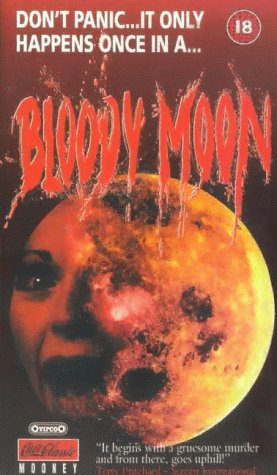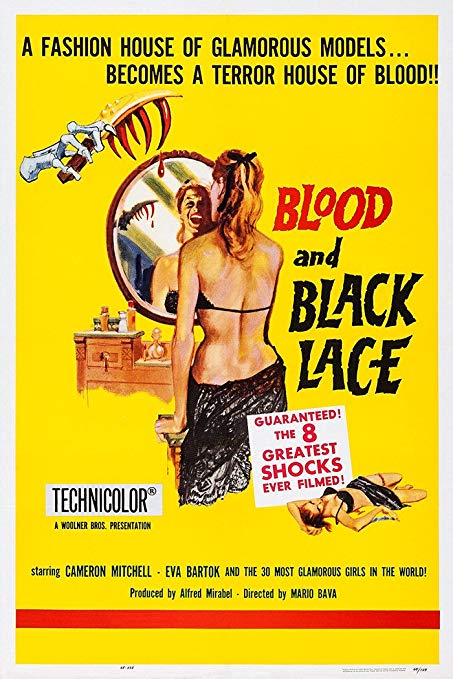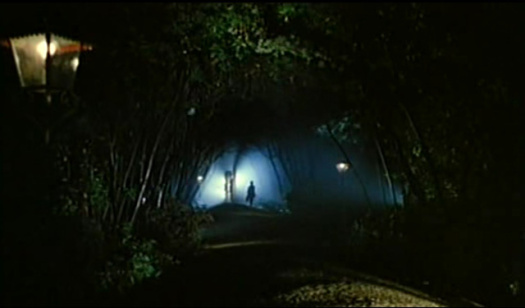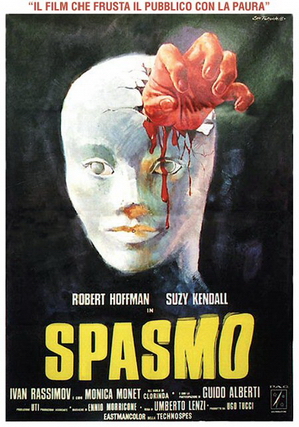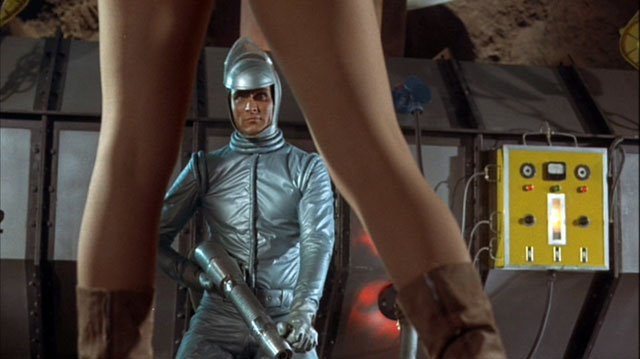A 1981 West German/Spanish co-production, Bloody Moon open with a disfigured man named Miguel (Alexander Waechter) putting on a Mickey Mouse mask and sneaking into a party being held on the campus of a private school that is known as (deep breath) Europe’s International Youth-Club Boarding School of Languages. It’s a school that is meant for the young, the rich, and the unburdened. In short, it’s not a place for Miguel at all.
With his face safely hidden behind the smiling image of Disney’s favorite mouse, Miguel meets a young woman who is dancing by herself. She mistakes him for her boyfriend and heads into a nearby bungalow with him. They start to make love but — uh oh! — the mask falls off! The woman screams at the sight of Miguel’s scarred face. Miguel grabs a pair of scissors and stabs her to death while Mickey Mouse’s smiling face smiles on the floor. (One can only imagine how Disney reacted to this film.)
A few years later, Miguel is being released from a mental hospital. He’s released into the custody of his sister, Manuela (Nadja Gerganoff). Miguel’s doctor (played by the film’s director, Jesus “Jess” Franco) says that Miguel should be fine as long as he’s not around anything that reminds him of the incident. Manuela says that she’ll look after him and then promptly takes him back to the school where he committed the murder. What part of not reminding him did she fail to understand?
Manuela does actually have an excuse for bringing Miguel to the school with her, though. She and her aunt, Countess Maria (Maria Rubio), own the school. Countess Maria is an angry, wheelchair-bound woman who is convinced that Manuela wants to kill her so that she can take over the school and it does seem that Manuela does have some hostility towards her aunt. Of course, another reason for bringing Miguel back to the school to live with her is that he and Manuela have an incestuous relationship …. or, at least, they did. Now that Manuela refuses to sleep him, Miguel is reduced to lurking around campus and staring at all the students while they sunbathe topless at the pool. While Manuela stands naked in her room and stares at the moon (the bloody moon?), Miguel is hunched down in the shrubbery and peeping through windows.
Among the students is Angela (Olivia Pascal). Angela is upset because she discovered a dead body but no one’s willing to believe her because she also enjoys reading mystery novels. Angela knows that someone is committing murders on campus but is it Miguel or it is Professor Alvaro (Christoph Moosbrugger) or could it even be the enigmatic Bueno (Otto Retzer), a bald guy who seems to randomly pop up around campus? Can Angela convince her remarkably stupid classmates that there’s a murderer on campus before it’s too late?
Bloody Moon was one of the many films directed by the Spanish auteur and former Orson Welles collaborator, Jesus Franco. In a career that lasted over 60 years, Franco directed at least 173 feature films. (It’s felt that he actually directed quite a bit more, usually under a pseudonym. Franco, himself, claimed that he didn’t really remember how many films he had directed.) As a director, Franco is remembered for his low budgets, his unapologetic embrace of the sordid, his rather casual attitude towards maintaining continuity from one scene to another, and for occasionally framing an interesting shot or two. By his own admission, Bloody Moon was not a personal project for Franco. It’s something that he did for the money, as a director-for-hire. However, Bloody Moon is unmistakably a Franco film. The budget is low. The subject matter is often so sordid that it borders on parody. As far as continuity goes, Angela goes from wearing a nightshirt when she discovers a dead body inside her bungalow to wearing a colorful sweater when she runs outside in a panic. (I guess she could have stopped to change clothes with a dead body on the bed and a killer lurking somewhere in the bungalow but I doubt it. When there’s a dead body on your bed, modesty should be the least of your concerns.) And yet, as silly as it all is, there are moments when Bloody Moon does achieve a certain dream-like intensity. The mix of badly dubbed performers, sudden jump cuts, bloody violence, and the total lack of narrative logic makes Bloody Moon feel a bit like a filmed nightmare. It works despite itself.
Bloody Moon is one of the films that was, for a while, banned in the UK due to its violence and bloodshed. And indeed, there is a lot of blood and the violence is a bit more graphic than what one might expect to find in the American slasher films that Bloody Moon was obviously meant to capitalize upon. This film is notable for just how cruel the killer is. Not even Michael Myers or Jason Voorhees resorted to using a giant radial saw. That said, this is one of those films that has a reputation for being bloodier than it actually is. The majority of the film is taken up with scenes of people wandering around campus, either searching for their friends or stalking a potential victim. Personally, I felt the nonstop searching scenes added to the film’s dreamlike feel but I imagine those who only watch films like this for the kills will find it all to be a bit slow.
Bloody Moon was clearly made to capitalize on the success of American slasher films like Halloween and Friday the 13th. That said, Bloody Moon has more in common with the Italian giallo genre, right down to the whodunit nature of the plot, the ludicrously sleazy motives of the killer, and the total lack of intentional comic relief. Like so many giallo films, Bloody Moon takes place in a world where everyone’s either a victim or a killer and no one’s particularly likable. It’s not one of Franco’s personal films but there’s still enough of his signature style to appeal to his fans. As with most of Franco’s film, it will be best appreciated by those who like a little ennui mixed with their horror.
